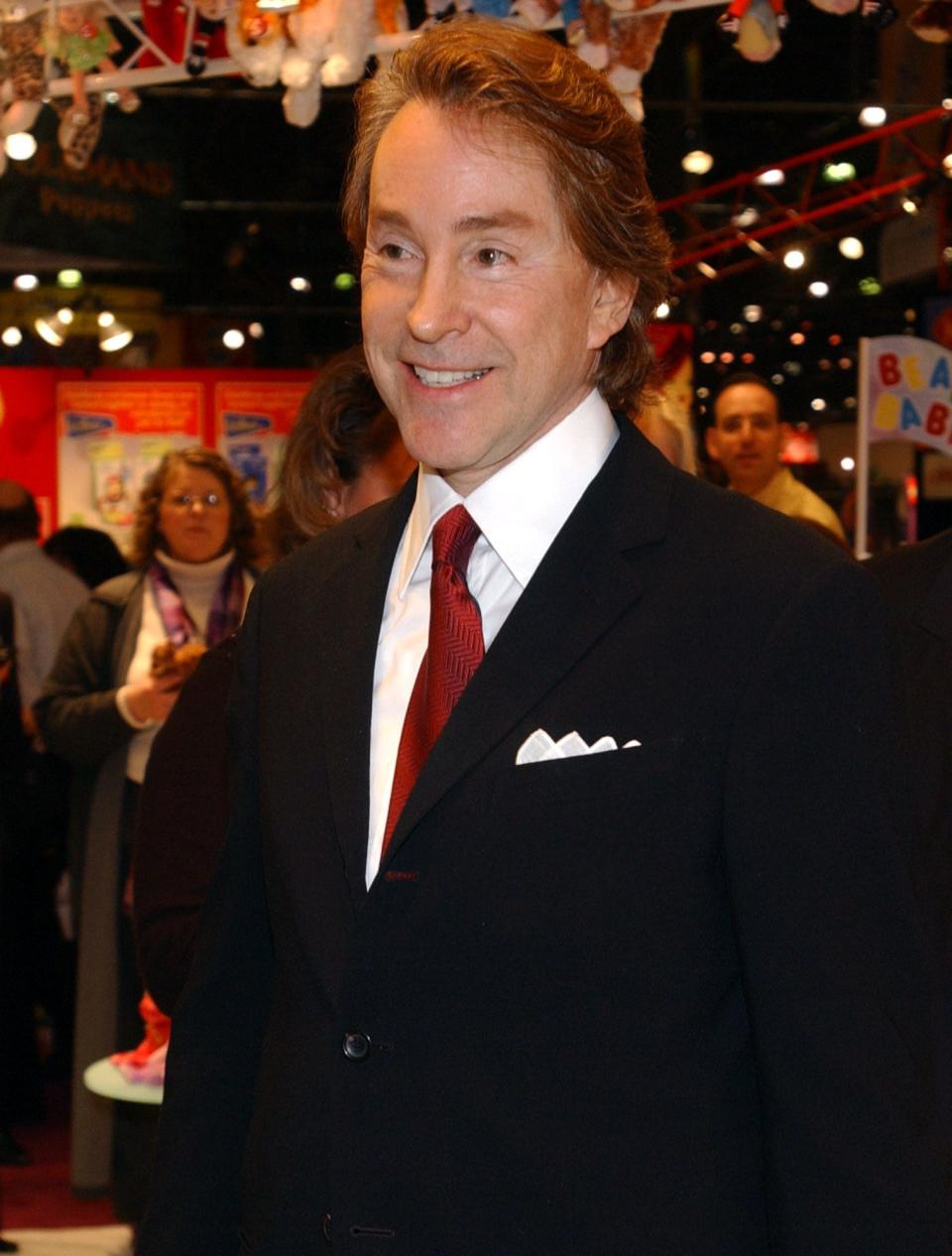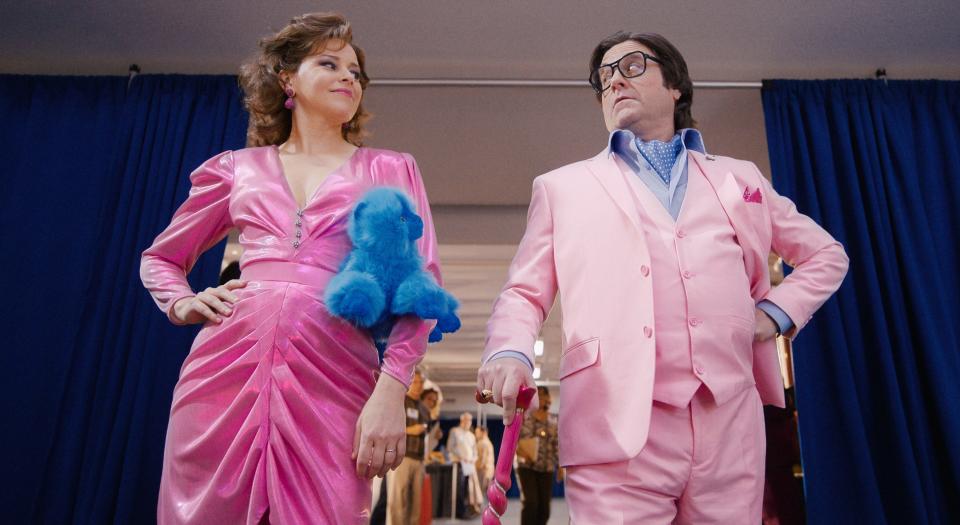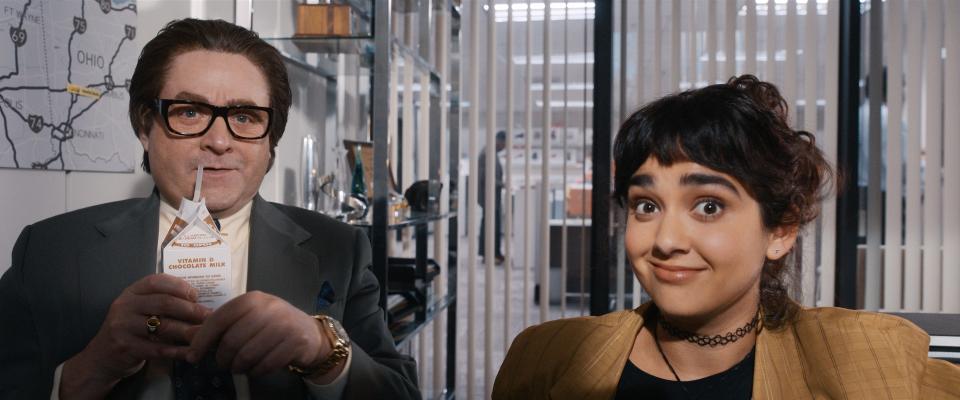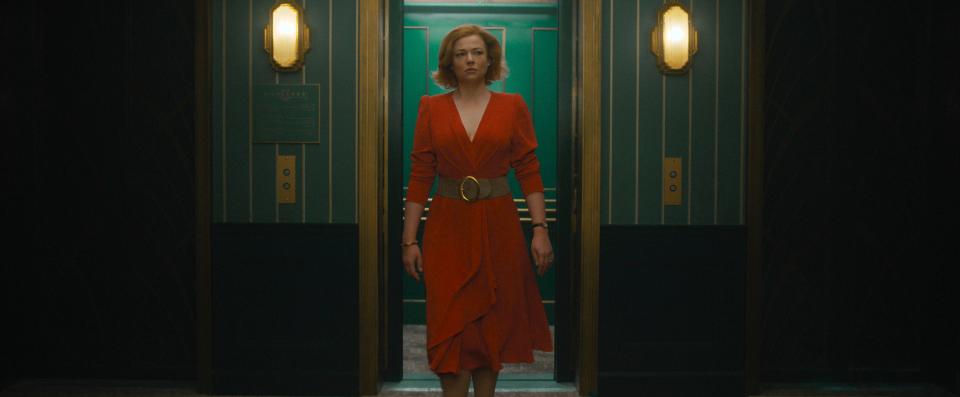Fact-checking 'The Beanie Bubble': Did Ty Warner take credit for a child's invention?
- Oops!Something went wrong.Please try again later.
- Oops!Something went wrong.Please try again later.
“The Beanie Bubble,” the new Apple TV+ movie tracing the rise and bottoming out of the market of small stuffed animals, opens with a disclaimer: “There are parts of the truth you just can’t make up. The rest, we did.”
Naturally, we wondered: Which parts are fact and what parts have been embellished?
“The substance of (the film) is real, but the last thing we wanted to do was to claim that this is a documentary,” says Damian Kulash, who co-directed with his wife, Kristin Gore. What they found interesting was the erroneous assumption that "a $5 bean bag, mass-produced in Asia, is suddenly worth its weight in gold − at a distance, that's sort of a crazy thing to think.”
It does sound crazy to recount the 1990s Beanie boom when the world became obsessed with collecting the under-stuffed plush toys. Ty Inc.’s strategy of "retiring" Beanie Babies created scarcity, and most believed their value would only increase over time. But screenwriter Gore had more than Beanie fever to work with.
Here’s how the movie (now streaming) compares to the stranger-than-fiction tale.
Sadly, not $500,000: How much is the Princess Diana Beanie Baby worth?
Is 'The Beanie Bubble' based on a true story?
The movie is based on Zac Bissonnette’s 2015 deep-dive “The Great Beanie Baby Bubble.” Ty Inc.'s billionaire founder H. Ty Warner, now 78, declined to be interviewed for the book but warned Bissonnette "the Beanie Baby thing is a lot of good and a lot of bad, and a lot of nice and a lot of not so nice,’ ” the author tells USA TODAY.
The movie focuses on Warner (Zach Galifianakis) and the women in his life: Robbie (Elizabeth Banks), his business partner and former flame; Sheila (Sarah Snook), his longtime love; and Maya (Geraldine Viswanathan), the minimum-wage employee who brilliantly marketed Beanie Babies. Though based on real people, their names have been changed.
Did Ty Warner and his dad really share a girlfriend?

Early in the movie, when Warner and Robbie are getting to know each other, he describes his mother as “a violent, paranoid schizophrenic” and his dad, who sold toys for Dakin, as physically abusive. “The only time my dad was proud of me is when our girlfriend told him how good I was in bed,” Warner shares. “You dated the same woman at the same time?” asks Robbie, who is based on Patricia Roche. “Not always at the same time,” Warner says.
"Ty and his father dated the same women on several occasions," according to “The Great Beanie Baby Bubble.” "Ty was jealous of his father’s charms and channeled that energy into seducing women his father had been with.”
Who invented Beanie Babies?
The movie shows Warner having a lightbulb moment while meeting Sheila’s two daughters in 1993. (In real life, Sheila is a woman he dated named Faith McGowan.) The older one, named Ava in the film, complains she can't bring Ty’s stuffed animals to school because they don't fit inside her backpack. “Oh, no!” Warner says. “Well, I’m going to have to make a smaller one then.” Ava also suggests making the product softer.
At their next hangout, Warner presents the girls with a Beanie Baby frog. Together, they name the frog "Legs." The movie references Sheila’s kids as his “design team.”
Bissonnette’s book makes it seem that it was Warner’s idea alone to manufacture a tiny toy that could easily fit in a backpack. But McGowan and her kids remember the designs as a group effort. “The prototypes were all over” the home they shared with Warner, McGowan’s daughter Jenna Boldebuck told Bissonnette. “What would make this one or that one better was always a topic of conversation.”
Remember these toys? 12 nostalgic picks from holiday seasons past
Whose idea was it to 'retire' Beanie Babies?

In the movie, Maya, who began at Ty as a telemarketer, says the company couldn’t move Beanie Babies for two years. At a gift show, Maya tells a store owner looking for Ty's traditional stuffed lamb that the style was a limited edition. “If you still have some, they’re pretty valuable. You know, the first issue of Action Comics sells for over $1 million,” she says. When he asks if there are other limited editions, she responds, “All the Beanie Babies are. It’d be a good idea to stock up.” And he places an order.
In actuality, Bissonnette attributes the idea to Ty sales reps Bryan King, Chris King and Kevin King, who told retailers at an Atlanta show that the discontinued lamb had been "retired," a more pleasing answer. Bissonnette writes that Warner “was intrigued” by the idea and decided to apply it to his Beanie Baby line.
Did the real Maya, aka Lina Trivedi, really only make $12 an hour?

Maya begins working at Ty as a college freshman earning minimum wage and takes initiative, suggesting adding poems to Beanie Baby tags and launching a website for customers. At a holiday party, Warner tells a frustrated Maya, who has deferred medical school, that he can bump her to an insulting $20 an hour, and she quits.
Trivedi was a 19-year-old college student studying sociology when she took a job at Ty, per “The Great Beanie Baby Bubble.” Ty Inc.’s 12th staff member, who planned to go to law school, made “a little over minimum wage.” Like Maya, Lina wrote the poems for tags, ran the company’s website, and resented her $12 hourly wage. When she asked for a salary of $120,000 and was rejected, she left. At 25, Trivedi started her own web development company.
Did Ty Warner take credit when a child designed Spooky the ghost?

In the movie, Sheila’s older daughter shows Warner a drawing of a ghost. “It’s fantastic,” he tells her, and the design goes into production with a note that it was designed by Ava Harper. Later, Ava runs to her mom crying because her name has been replaced on the toy’s tag with Warner’s. In the family’s garage, Sheila finds boxes marked “canceled stock” full of Ava-designed Spookies. After Sheila and Warner break up, she sells the canceled Spookies, which gives her enough money for a car, house, and her daughters’ college education.
In real life, Warner expressed interest over dinner in creating a ghost and McGowan's daughter Jenna drew one on the restaurant's paper tablecloth. He put the illustration in his wallet and a ghost named Spook went into stores, crediting Jenna for her design. After two months, Warner eliminated Jenna’s name from the tag and renamed the Beanie Baby "Spooky." When McGowan and Warner split, she received about $6 million in assets and died in 2013.
Did Sheila/Faith McGowan really punch Ty Warner?
At a company holiday party, Sheila leaves a hotel ballroom looking for Warner. She knocks on the door she suspects in his room and Robbie answers. “I’m sorry this is how we’re meeting,” Robbie tells her. “It doesn’t mean anything if that helps. I just like to show him who’s boss.” Sheila leaves, and Warner goes after her. As the elevator doors open, Sheila takes a swing at Warner. That also happened in real life.
On Christmas Eve in 1998, McGowan suspected Warner might be with Roche, Bissonnette writes. After seeing Warner’s car in the parking lot, McGowan called Roche’s hotel room and demanded to speak to Warner, who said his visit was strictly business. He made his way to the lobby, where McGowan punched him. Warner discouraged police from filing a report, and the pair went home.
This article originally appeared on USA TODAY: 'The Beanie Bubble' fact check: How accurate is the Ty Warner movie?

